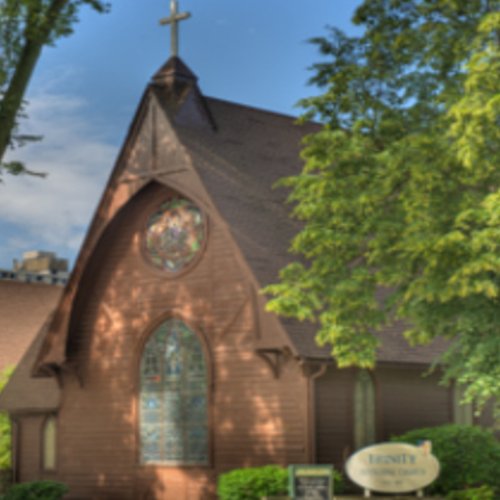 In 1875, three influential families, the Drummonds, Shearsons and the Warracks, consulted with Bishop William E. McLaren regarding the establishment of an Episcopal Church mission in Wheaton. Six years later the small congregation was ready to build its own church and a lot at West and Wesley streets was purchased for $300. The Rev. Theodore N. Morrison, D. D. was the Vicar at this time. The cornerstone of the new church was laid by Bishop McLaren on December 18, 1881, and despite severe winter and spring weather, the church – now Trinity's historic chapel – was built. The total cost of the building and materials was $4,063.35. The chapel is the oldest church building in Wheaton in continuous use.
In 1875, three influential families, the Drummonds, Shearsons and the Warracks, consulted with Bishop William E. McLaren regarding the establishment of an Episcopal Church mission in Wheaton. Six years later the small congregation was ready to build its own church and a lot at West and Wesley streets was purchased for $300. The Rev. Theodore N. Morrison, D. D. was the Vicar at this time. The cornerstone of the new church was laid by Bishop McLaren on December 18, 1881, and despite severe winter and spring weather, the church – now Trinity's historic chapel – was built. The total cost of the building and materials was $4,063.35. The chapel is the oldest church building in Wheaton in continuous use.
Other buildings were also added to the Trinity campus. The Guild House, which was a space for meetings, was added in 1893. There had been plans in the 1920’s to build a new, larger church and chapel on the property. This design followed typical Anglican design with a church and chapel connected by a covered walkway called a cloister. It would also include a parish hall which would include a small stage and provided space for sports and other activities. Another more unusual feature of this plan was to include a swimming pool and locker rooms beneath the church. Only the parish hall and bell tower was built and it was finished in the spring of 1925.
In the mid-1950’s, a new plan was suggested. This plan included a parish hall, a large church and a smaller chapel which would connect to the church with a covered walkway called a cloister. A study of the facilities and the chapel was conducted in 1956 and it was suggested that the chapel be torn down due to the need for expensive repairs. Only the larger church was completed in 1958. The members of the parish supported the repairs of the chapel, and additional repairs were made several times in the next 50 years.
Improvements and updates to the church property were made in 1996. The property also includes a columbarium – a sacred area designated for the installation of cinerary urns and a meditation labyrinth. The gardens were designed in large part by the late Rev. Deacon Robert Taylor with additional work by his son, Brad Taylor.
The chapel was placed on the National Register of Historic Places in 1975 which coincided with the centennial celebration of the founding of Trinity Church
